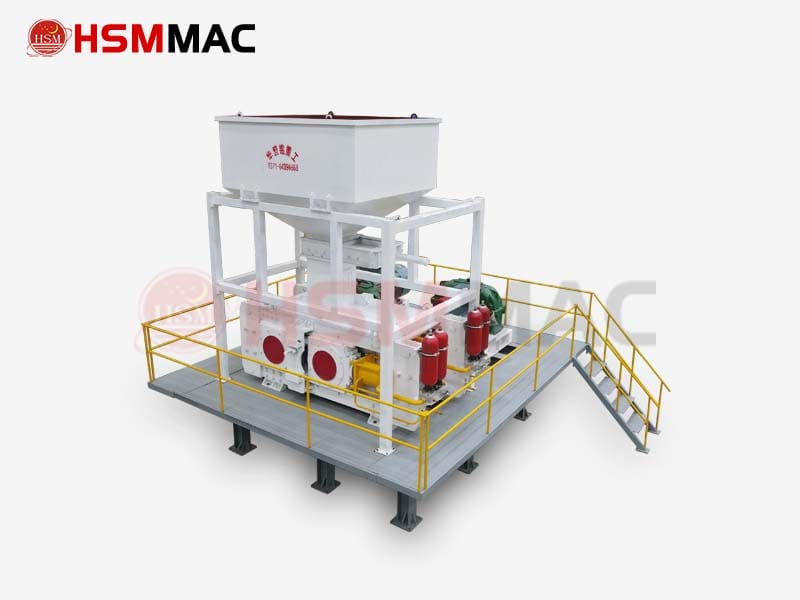
Applicable materials:clay shale, chalk, brick, slag, clinker, feldspar, coke etc. It applies to cement chemical industry, electric power, metallurgy, construction, refractory and other industrial department including limestone, slag, coke, steel slag etc.
Application scope: cement chemical industry, electric power, metallurgy, construction, refractory and other industrial department including limestone, slag, coke, steel slag etc.

Ore Materials Crusher
High pressure roller mill is a high pressure roller mill with a simple structure and reliable performance, which can control the fineness modulus for fine and ultra-fine crushing operations. Our company has specially considered the requirements for hard material crushing in the current market in its design, which greatly enhances the crushing capacity compared to other high-pressure roller mills. Suitable for fine crushing operations of hard and medium hard materials with compressive strength less than 250Mpa and humidity less than 10%. Solid materials such as river pebbles, coke, coal, ceramic raw materials, quartz stone, limestone, muddy shale, chalk, bricks, slag, clinker, feldspar, coke feldspar, gypsum, salt, chemical raw materials, etc.
High pressure roller mills can also be used for finely crushing various single raw
materials such as high or medium hardness ores, rocks, industrial waste residues, or mixed raw materials mixed with clay in industrial sectors such as mineral processing, power, chemical, cement, refractory materials, abrasives, and construction. Especially in the production of products such as guar rice stone, coal, and coal gangue in construction materials and power industries, they have better performance than general high pressure roller mills, It can also be widely used in the crushing steel sand industry.
The main body of the high-pressure roller mill is composed of two opposite rotating rollers. Brittle materials are fed into a weighing bin equipped with weighing sensors by conveying equipment, and then through the feeding device of a roller press, they enter between two rollers of the same size that rotate relative to each other. The rollers pull the materials into the roller gap, press them into dense material cakes, fall from the roller gap, pass through the discharge hopper, and are output by the conveying equipment. Further dispersion or grinding of the material cake by the next process.
| Model | Feed size (mm) | Capacity (t/h) | Power (kw) | External Dimension (mm) |
| G100x60 | 50 | 145-200 | (132-200)x2 | 3186*2309*2371 |
| G120x80 | 50 | 190-310 | (200-250)x2 | 4560*3130*3335 |
| G140x100 | 50 | 310-420 | (250-315)x2 | 5153*3730*3885 |
| G180x150 | 60 | 850-1180 | (800-900)x2 | 6500*4100*4300 |
 +86-18703839693
+86-18703839693

